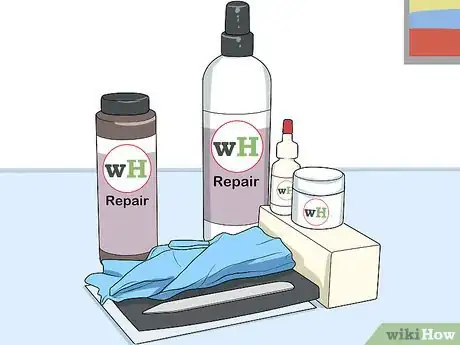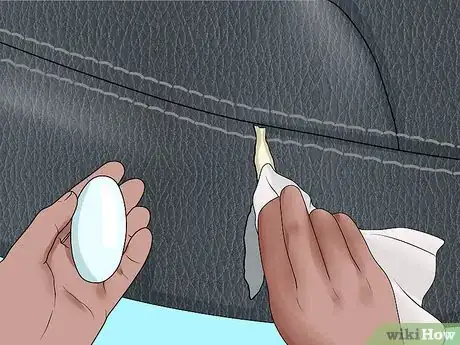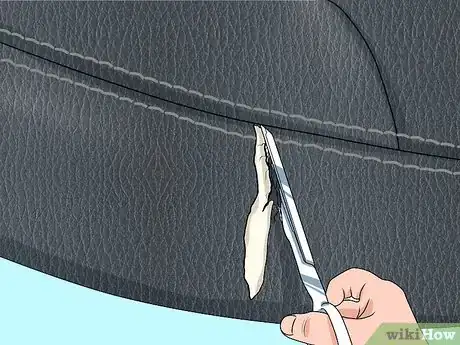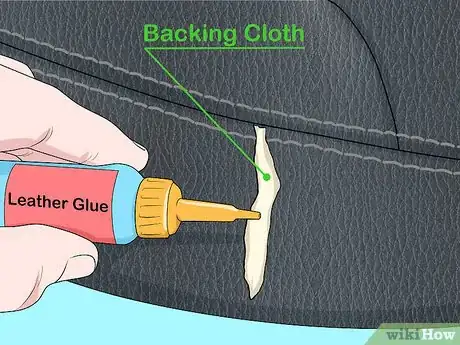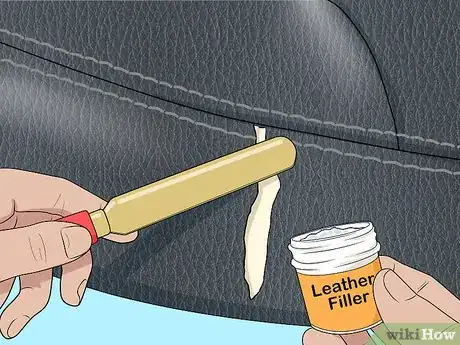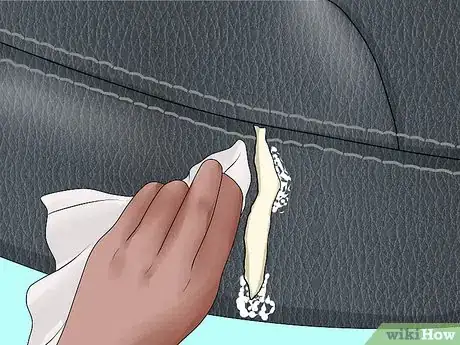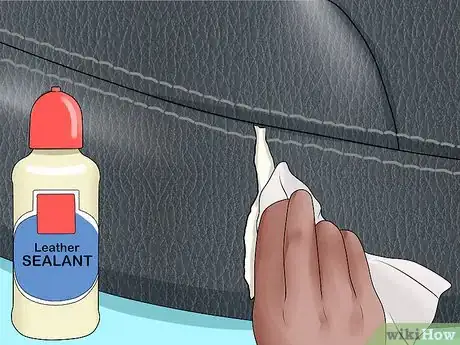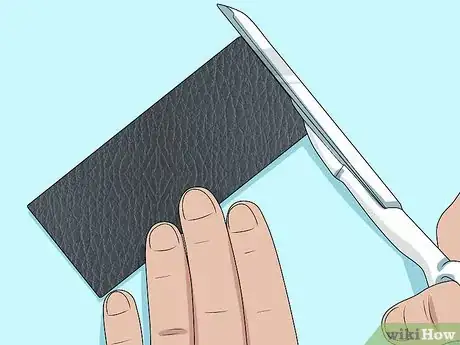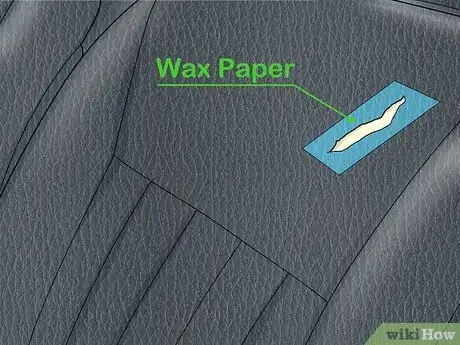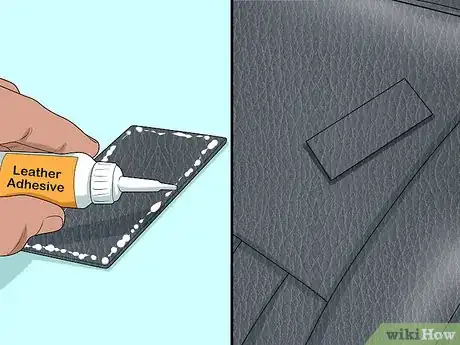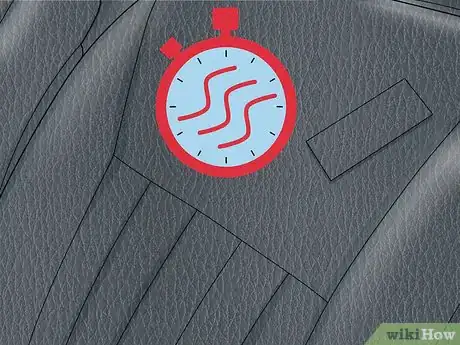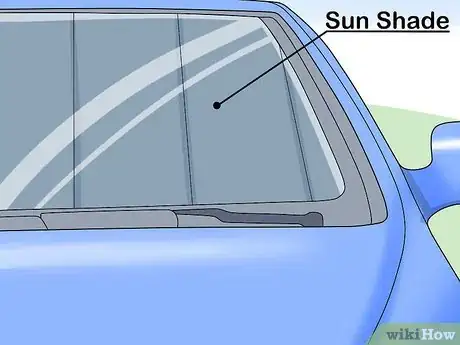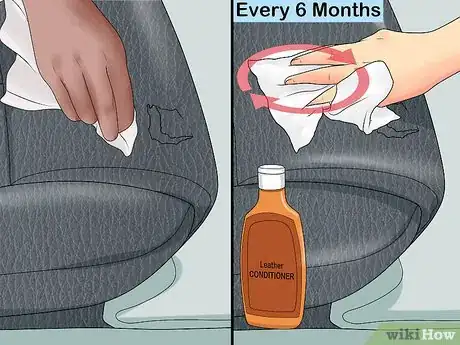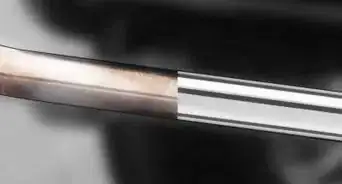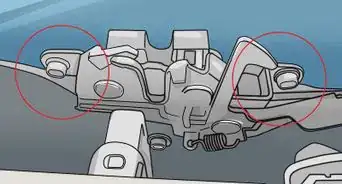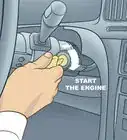This article was co-authored by Tom Eisenberg and by wikiHow staff writer, Sophia Latorre. Tom Eisenberg is the Owner and General Manager of West Coast Tires & Service in Los Angeles, California, a family-owned AAA-approved and certified auto shop. Tom has over 10 years of experience in the auto industry. Modern Tire Dealer Magazine voted his shop one of the Best 10 Operations in the Country.
This article has been viewed 334,364 times.
If you’ve got a tear, hole, or crack in your leather car seat, you may be wondering whether you need all new upholstery. Fortunately, you can repair small amounts of damage by yourself. Fix tears with a repair kit, use a patch to fix holes, or refinish the seats with liquid leather to hide cracks. Keep in mind that large gouges and rips are best fixed by someone with upholstery experience.
Steps
Fixing Tears with a Repair Kit
-
1Choose a repair kit with colorant that matches the leather. Your best bet is to find a repair kit made by the manufacturer of your car. Otherwise, compare several kits to your upholstery to find the best color match.[1]
-
2Clean the seat. Use mild soap and a damp rag to clean the leather. Remove crumbs, dust, dirt, and grime by scrubbing the seat gently. Allow it to dry completely before proceeding.[2]Advertisement
-
3Trim any ragged edges around the tear. If the edges of the tear curl outward or have threads hanging from them, use a pair of scissors to trim them off.[3]
-
4Glue the canvas backing cloth underneath the tear. Slip a piece of backing cloth into the hole and then slide it beneath the tear. Put a small amount of the included glue on the edges of the tear so they stick to the cloth. Allow the glue to dry completely.[4]
-
5Build up layers of leather filler. Use a palette knife to spread the leather filler onto the backing cloth between the edges of the tear. Allow each layer to dry before applying another. Keep building up the filler until it slightly overlaps the leather seat.[5]
-
6Sand down the filler. Once the filler is completely dry, use a fine-grit sanding block to sand down the top layer. Stop when the filler is even with the rest of the leather.[6]
- Do your best not to sand too much of the surrounding leather. A sanding block, rather than sand paper, will give you more control over the area.
-
7Wipe down the seat with a damp cloth. Use a slightly damp, clean cloth, to remove any dust or debris leftover from the sanding process. Allow the seat to dry before moving on.[7]
-
8Apply the colorant to the filler. Use a clean cloth to rub the colorant onto the area where you applied filler. Build up several layers if necessary, allowing each layer to dry fully, until the color matches the rest of the leather.[8]
-
9Cover the area with leather sealant. Apply leather sealant with a clean cloth to the area you repaired. This will prevent the colorant from rubbing off. Allow the sealant to dry completely before sitting on the seat.[9]
Applying a Patch
-
1Choose a patch that matches your seat. The leather you choose to patch the seat with should be an exact match, if possible, such as an extra swatch of leather that came with the car or a piece of the upholstery from under the seat near the frame.[10]
- Otherwise, choose another piece of leather with a similar texture and dye it to match your upholstery.
-
2Cut the patch to fit the damaged area. The patch should be slightly larger than the hole or tear so that you can attach it to the good leather around the damage. Use sharp scissors to cut out the patch so the edges are neat.[11]
-
3Put wax paper behind the hole or tear. In order to keep the glue from hardening the foam interior of the seat, put a piece of wax paper behind the hole or tear that is larger than the patch. Slip it in one side then push the other side through the hole so it is behind the leather.[12]
-
4Attach the patch with leather adhesive. Apply leather adhesive to the edges of the patch. Carefully press the patch over the hole or tear, making sure the patch covers the hole or tear entirely and bonds to the good leather.[13]
-
5Allow the adhesive to dry completely. Refer to the instructions that came with the leather adhesive to find out how long it takes to cure. Avoid sitting on or placing any objects on the seat until the adhesive is dry.[14]
Refinishing with Liquid Leather
-
1Ensure the liquid leather matches perfectly. You can send a small swatch of the leather (there will be extra underneath the seat) to the liquid leather distributor to find an exact match. Or, provide the color code or name to the distributor to make sure you get the right shade. Liquid leather is a combination filler and adhesive compound that can be purchased online and in many auto parts and upholstery stores.[15]
- Test the product in an inconspicuous spot before applying it to the rest of the seat. Adjust the color with the provided toner or exchange it for a better match, if necessary.
-
2Clean your leather seats. Sweep any any debris or crumbs, then put a small amount of leather cleaner on a soft cloth or rag. Scrub the seats with the cloth to remove dirt and grime. Then, put a mild solvent, like 50% isopropyl alcohol, on a clean rag and wipe down the seats to remove any residue. Allow the seats to dry completely before moving on.[16]
-
3Apply diluted liquid leather with a sponge to worn areas. Dilute the liquid leather with water by 30% before rubbing it into cracks and creases. Wipe off the seat with a damp cloth so that the product is removed from the good leather and left in the cracks. Let the liquid leather dry then apply another coat to strengthen the color or build up cracks, if necessary.[17]
-
4Add a full-strength coat to the entire seat. Once the worn areas have dried, apply an even coat of liquid leather to the entire seat. This will ensure that the whole seat is the same color and will make repaired areas less noticeable.[18]
-
5Condition the leather after it dries. Once the liquid leather has dried completely, you should condition the leather to prevent it from cracking further. Use a leather conditioner and apply it with a soft cloth to the entire seat. Allow it to dry fully before sitting on the seat.[19]
Preventing Further Damage
-
1Use a sun shade. Direct sunlight is what causes leather seats to fade and crack. Put an expandable sun shade in your windshield to protect the leather from harsh light and heat. Place a sun shade in your windshield any time your car will be exposed to the sun for extended periods of time, such as when your car is parked in the office parking lot during the day.[20]
-
2Condition the leather regularly. When leather dries out, it is more likely to crack or tear. Clean the leather seats then apply a leather conditioner to them every 6 months or so. Use a soft cloth and small circular motions to apply the conditioner to the entire seat.[21]EXPERT TIPTom Eisenberg is the Owner and General Manager of West Coast Tires & Service in Los Angeles, California, a family-owned AAA-approved and certified auto shop. Tom has over 10 years of experience in the auto industry. Modern Tire Dealer Magazine voted his shop one of the Best 10 Operations in the Country.Auto Technician

 Tom Eisenberg
Tom Eisenberg
Auto TechnicianThe best advice is to protect your leather and not scratch it. Scratches and cracks are fairly easy, but tears are difficult to treat. There are some leather magicians out there that can fix tears and recondition your leather, but tears are not easily repaired.
-
3Avoid sharp objects. Keys, tools, pocket knives, and other sharp objects can poke holes or create tears in your leather seats. Take care to remove sharp objects from your pockets before getting into the car. Place sharp objects in the trunk or on the floor, or cover your seats with a thick blanket first.[22]
Our Most Loved Articles & Quizzes
Things You’ll Need
Fixing Tears with a Repair Kit
- Leather seat repair kit
- Scissors
- Clean cloths
- Mild soap
- Water
- Fine-grit sanding block
- Leather sealant
Applying a Patch
- Leather patch
- Scissors
- Wax paper
- Leather adhesive
Refinishing with Liquid Leather
- Leather cleaner
- Sponge or cloth
- 50% isopropyl alcohol
- Liquid leather
Preventing Further Damage
- Sun shade
- Leather conditioner
- Clean cloth
References
- ↑ https://itstillruns.com/repair-tear-leather-car-seat-6153048.html
- ↑ https://itstillruns.com/repair-tear-leather-car-seat-6153048.html
- ↑ https://itstillruns.com/repair-tear-leather-car-seat-6153048.html
- ↑ https://itstillruns.com/repair-tear-leather-car-seat-6153048.html
- ↑ https://itstillruns.com/repair-tear-leather-car-seat-6153048.html
- ↑ https://itstillruns.com/repair-tear-leather-car-seat-6153048.html
- ↑ https://itstillruns.com/repair-tear-leather-car-seat-6153048.html
- ↑ https://itstillruns.com/repair-tear-leather-car-seat-6153048.html
- ↑ https://itstillruns.com/repair-tear-leather-car-seat-6153048.html
- ↑ https://www.goldeagle.com/tips-tools/leather-car-seat-repair-how-fix-and-prevent-tears-and-cracks
- ↑ https://www.goldeagle.com/tips-tools/leather-car-seat-repair-how-fix-and-prevent-tears-and-cracks
- ↑ https://axleaddict.com/auto-repair/Leather-Repair-Car-Seats-Vinyl-DIY-Auto-Upholstery
- ↑ https://www.goldeagle.com/tips-tools/leather-car-seat-repair-how-fix-and-prevent-tears-and-cracks
- ↑ https://www.goldeagle.com/tips-tools/leather-car-seat-repair-how-fix-and-prevent-tears-and-cracks
- ↑ https://www.thoughtco.com/restore-your-cars-leather-interior-726336
- ↑ https://www.thoughtco.com/restore-your-cars-leather-interior-726336
- ↑ https://www.thoughtco.com/restore-your-cars-leather-interior-726336
- ↑ https://www.thoughtco.com/restore-your-cars-leather-interior-726336
- ↑ https://www.thoughtco.com/restore-your-cars-leather-interior-726336
- ↑ https://www.thoughtco.com/refinishing-and-repairing-leather-seats-281665
- ↑ https://www.thoughtco.com/refinishing-and-repairing-leather-seats-281665
- ↑ https://www.goldeagle.com/tips-tools/leather-car-seat-repair-how-fix-and-prevent-tears-and-cracks
About This Article
If you’ve spotted a tear or crack in your leather car seat, don’t worry. You can often fix small rips in leather upholstery using a repair kit. Make sure to choose a kit that matches the color of your car’s upholstery. You may even be able to get an exact match from your car’s manufacturer. Before you start, clean the seat using a rag dampened with mild soap and water. Scrub away dust and grime around the damaged area, then let the spot dry completely. Next, take some sharp scissors and trim away any loose threads or ragged edges around the rip. Take a small piece of canvas backing cloth, which comes with most leather repair kits, and slip it into the hole in your car’s upholstery. Position it so it sits directly behind the tear, then glue the edges of the torn leather down to hold the backing cloth in place. Once the glue is dry, use a palette knife to spread layers of leather filler over the part of the backing cloth that’s visible through the tear. Keep layering on the filler until it’s built up slightly above the surface of the leather and overlapping the edges of the tear. Allow the filler to dry completely, then sand the top layer down with fine-grit sandpaper until it’s even with the surface of the leather. Wipe away the dust with a slightly damp cloth and let it dry. Next, buff leather colorant onto the filler so it matches the rest of the seat. You may need to apply several layers of colorant in order to get a good match. Once you’re satisfied with the results, apply leather sealant over the area with a clean cloth to keep the color from fading or rubbing away. Make sure the sealant is completely dry before using the seat. If you’re looking for a quicker solution, you can always patch the tear by gluing a leather patch over it, or disguise wear and tear with a bit of liquid leather, which is a type of filler that matches the natural look of the leather. For large tears or other severe damage, your best bet is to take your car to an upholstery expert. Keep reading to learn how to apply a patch to your leather seat!
